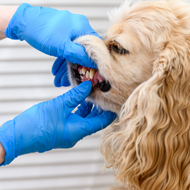The BWG’s guidance comes as brachycephalic dogs considered more at risk.
People’s Dispensary for Sick Animals (PDSA) has shared advice from the Brachycephalic Working Group (BWG) to protect flat-faced dogs from heatstroke.
PDSA considers brachycephalic dogs to be at an increased risk of heatstroke, as the condition prevents them from cooling themselves as effectively by panting. Over half the dogs treated for heatstroke by the PDSA in 2022, when the UK saw temperatures of 40 degrees, were a flat-faced breed.
Research from the British Veterinary Association (BVA) found that over half of veterinary surgeons surveyed had treated flat-faced dogs for heatstroke in the past year. A separate survey also found veterinary surgeons were especially concerned about how hot weather may impact brachycephalic dogs, and whether owners may recognise the warning signs.
PDSA’s concerns for flat-faced dogs has prompted them to share advice from BWG, a group focused on the wellbeing of brachycephalic dogs, on how to care for them during hot weather:
- Help them cool down: being unable to pant as well as other dogs means that brachycephalic dogs struggle to cool down, and can increase breathing difficulties. Encourage them to stay in the shade, avoid exertion and keep them inside during hotter weather. Never leave them in cars or conservatories.
- Plan your walks: Just 15 minutes in hot conditions can result in heatstroke, so plan walks for dusk/dawn. If this isn’t possible, skip the walk.
- Keep your dog hydrated: Place fresh water bowls around the house. For an extra cool drink, add some ice cubes.
- Look out for signs they are struggling with heat: look for physical signs such as heavier breathing, less energy, less playfulness, panting more, stumbling or laying down.
- Know the signs of heatstroke: Signs can include excessive panting, confusion, bright red gums, foaming at the mouth, vomiting, diarrhoea, collapse or seizures.
- Cool your dog down quickly: If your dog shows the above signs, cool them quickly. Move them to a cool area and offer them cool water. Contact your veterinary practice as soon as possible- remember ‘Cool first, transport second’.
- Know pet First Aid: This could be vital in an emergency. PDSA offers a First Aid Guide.
Dr Dan O’Neill, chair of the BWG, said: “Flat-faced dogs are currently hugely popular in the UK but owners of these breeds need to especially vigilant to protect their dogs from heatstroke. Avoid exercise during hot parts of the day and wet these dogs liberally as soon as they show are any signs of overheating. If you are concerned, contact your vet as soon as possible.
“The core message is ‘when in doubt, don’t go out – Dogs Die on Hot Walks’.”
Image (C) Shutterstock



 The WSAVA has invited veterinary professionals to a webinar on responsible antibiotic usage in dentistry.
The WSAVA has invited veterinary professionals to a webinar on responsible antibiotic usage in dentistry.